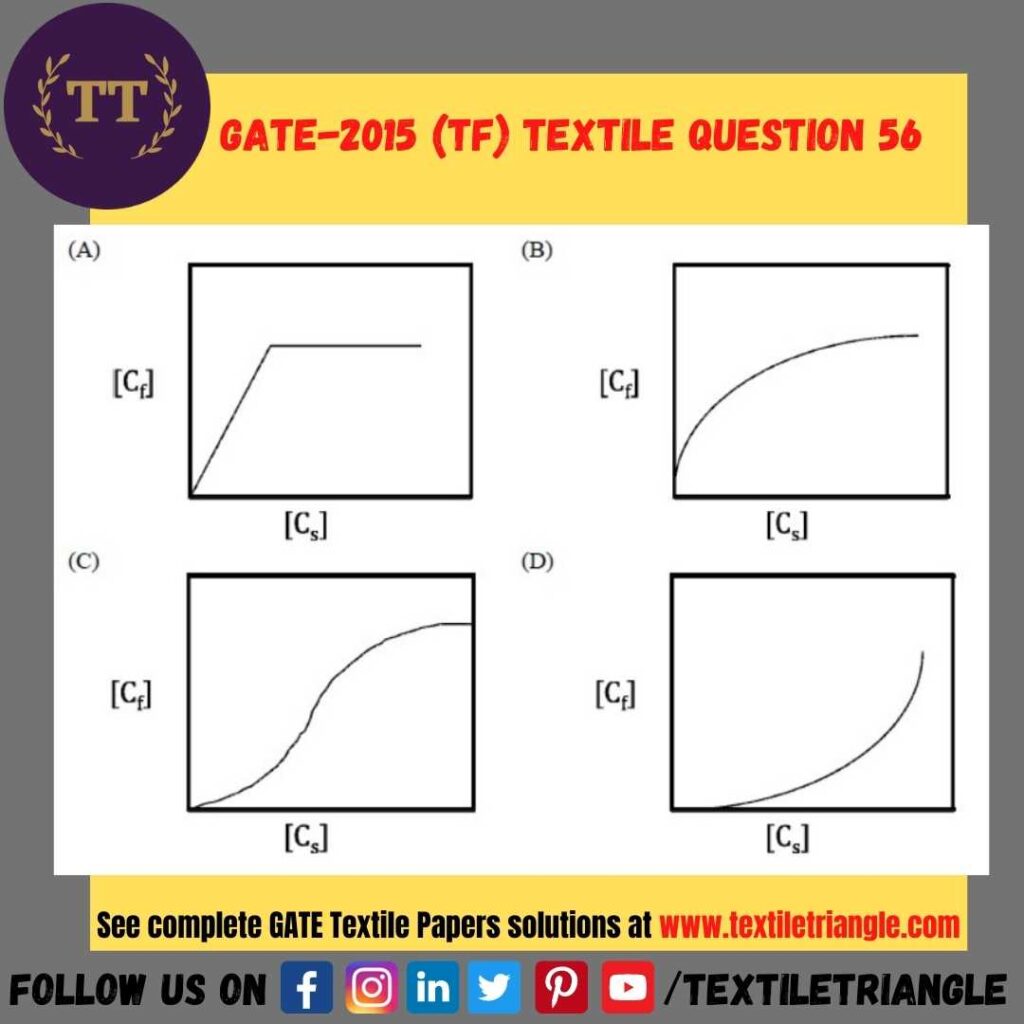Question 56 (Textile Engineering & Fibre Science)
If [Cs] and [Ct] represent dye concentration in the bath and in the fibre, respectively, the isotherm for dyeing of polyester with disperse dyes in represented by the figure

[Show Answer]
Write Here
A
Frequently Asked Questions | FAQs
What is the purpose of isotherm?
In dyeing, an isotherm refers to a graphical representation of the relationship between the concentration of a dye in a solution and its adsorption onto a substrate (usually a textile material) at a constant temperature. It describes how the amount of dye adsorbed by the substrate changes as the concentration of the dye in the solution changes, while keeping the temperature constant.
An isotherm typically has two axes: the x-axis represents the concentration of the dye in the solution, usually in terms of weight percentage or molarity, and the y-axis represents the amount of dye adsorbed by the substrate, usually in terms of weight of dye adsorbed per unit weight of substrate, such as grams of dye adsorbed per gram of textile material.
Isotherms are important in dyeing because they provide information about the adsorption behavior of a dye onto a substrate, which can help determine the optimal dye concentration for achieving the desired color depth and hue on the substrate. Different dyes and substrates may have different isotherm characteristics, and understanding the isotherms can assist in optimizing dyeing processes for different dye-substrate systems. Isotherms can also be used to study the kinetics and thermodynamics of dye adsorption, which can aid in the development of more efficient and environmentally friendly dyeing processes.
